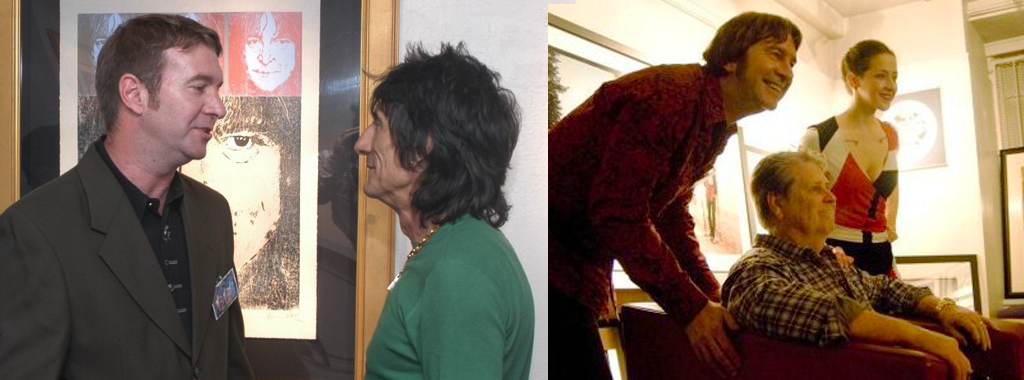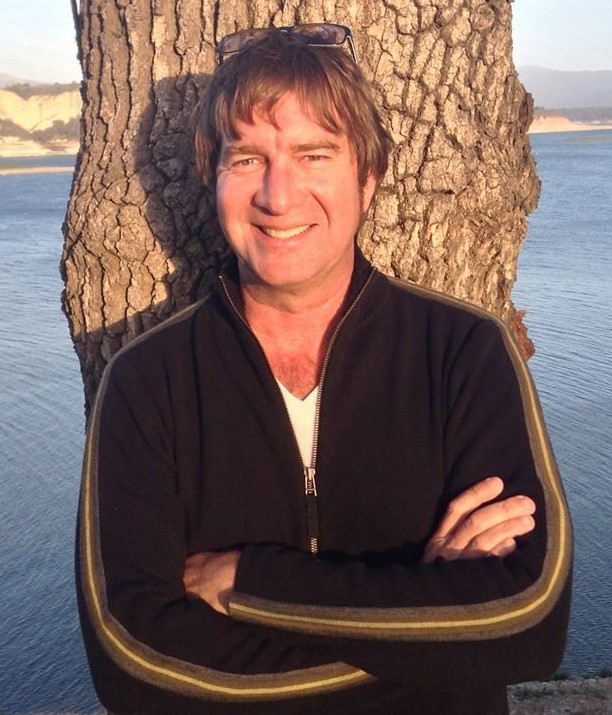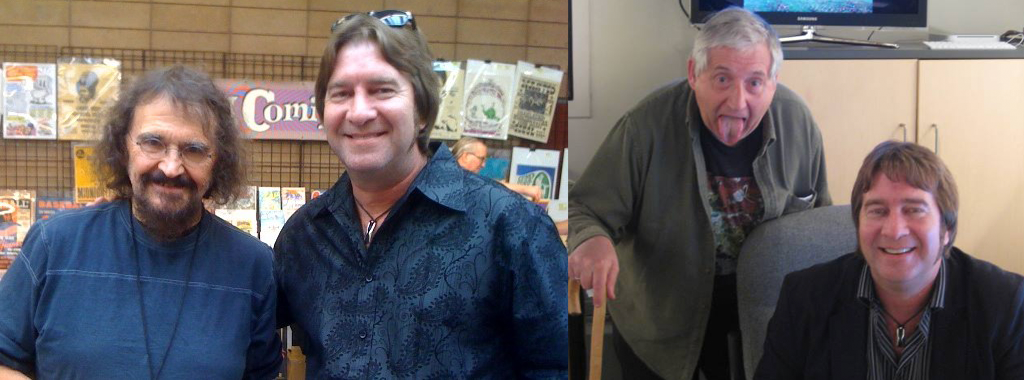INTRODUCING
All You Need is Myth: The Beatles and the Gods of Rock

All You Need is Myth: The Beatles and the Gods of Rock is wholly unique within Beatles and rock music histories and critiques, proposing that the Beatles and the iconic stars of the 1960s musical renaissance function as modern forms of classical archetypes familiar in mythologies and religious traditions throughout history. Author Steve Wagner establishes a persuasive argument that these “Rock Gods” have not only achieved the status of mythic deities but were chosen and nurtured for these roles by the culture itself because of their inherent resonance with archetypal characters, narratives, and symbolism. The thesis is bolstered by a fulcrum of philosophical perspectives connecting separate academic studies: music, world history, mythology, psychology, sociology, media, and the arts.
Imagine Joseph Campbell writing a book on rock & roll, and you will have a clear understanding of the revelatory content within All You Need is Myth. Wagner’s thoughtful inquiry makes original contributions to the field of mythology as it is understood in the modern day, inspires us to see artistic expression and modern culture through a mythic lens, and deepens our understanding of how mythic transmissions both emerge from and ultimately shape our collective consciousness. Impeccably researched and written with distinctive style and depth, All You Need is Myth entertains and educates lovers of the Beatles and rock music with information and insight they cannot find anywhere else.
About All You Need is Myth, Wagner says, “People often think that mythology is an ancient thing, but it’s always current and extremely relevant. It impacts how we see ourselves and our world. It informs our beliefs and personal choices. Myth is a map of human expression and a key to what we most value. It reflects our deepest emotions, celebrates our shared humanity, and makes our dreams come alive. Never was this more palpable and pertinent than during the classic rock era, when the Beatles, Bob Dylan, the Rolling Stones, and other rock gods brought our mythic archetypes to life in exhilarating and unforgettable fashion.”

Author Steve Wagner, photo by Sabu
All You Need is Myth features a Foreword by Jonathan Young PhD

Dr. Jonathan Young was personal assistant to renowned mythologist Joseph Campbell (The Hero with 1,000 Faces; The Power of Myth) and the founding curator of the Joseph Campbell Archives. He is a professor at the University of Philosophical Research in Los Angeles and the Pacifica Graduate Institute in Santa Barbara, where he created and chaired the Mythological Studies Department. Dr. Young has lectured at UCLA, Notre Dame, and Oxford University and is the editor of the books Saga and Saga 2—Best New Writings on Mythology. He consults on films for major studios and appears as a mythology expert on the History Channel, where he was featured in the documentary Star Wars: The Legacy Revealed.
About the book, Young says, “All You Need is Myth reminds us that the holy is not the private property of theologians or other scholars. You will not only journey through a dazzling array of Beatles’ lore but will be exposed to new perspectives throughout. Wagner combines insights from a range of noted theorists to build a convincing case for the profound significance of this music both culturally and personally. Reading this book will be a celebration of the importance of popular music in your life. You might keep a journal nearby as you read these pages.”
Experience First Pages
FOR FREE
PART 01
In March 1966, in a feature article titled “How Does a Beatle Live?” for the London Evening Standard, journalist Maureen Cleave quoted John Lennon saying the Beatles had become “more popular than Jesus.” Though it caused some Christian apoplexy at the time (in the United States, at least), it’s now cited as a harmlessly poignant observational comment on the strangely spiritual role of the rock star in the modern, media-sculpted cultural landscape.
The relative truth of John’s statement, already becoming clear by 1966, is now hard to deny. Religion and modern pop culture have intermingled as the romantic couple whose relationship is an open secret. Star Wars, with its basic plot derived from Joseph Campbell’s notion of monomythic narrative and heroic archetypes; Star Trek, with its humanistic guiding principles and embrace of diversity and social justice; the Marvel and DC universes, populated by super-humans often disguised by everyman alter-egos liberating the populace, lord over the box office of cinema and adorn the living room walls of legions of followers. For the massive fan bases of these and other sci-fi brands, Comic-Con is a Western world commercial Mecca, a sacred pilgrimage shared with countless like-minded true believers.
This we know and accept without much inquiry. While literary critique uncovers the mythic bedrock of our most beloved works of fiction and narrative poetry, the savior characters of print, television, and film remain our most reliable protagonists, and, as always, consciousness-expanding treasure maps to the idealistic pearls of our perfected selves. If our sacred texts have become dusty and yellowed by time and increasingly impenetrable to modern minds, we are still drawn en masse to Christ-like heroes and their stories of redemption and transcendence like ancient moths to ever-flickering mythic flames.
Still, we dance around the subject of religion in popular music like tongue-tied suitors, desperate to avoid embarrassment, clumsily pursuing it and yet all too willing to retreat to the safety of the conventional wisdom, which maintains that rock & roll, and for that matter the whole of secular art and media, is simply a grotesquery of our religious tendencies, a fun-house mirror rather than an actual object and catalyst of our evolving mythic experience. Rarer still is it that one steps back and views the phenomenon of the Beatles (or Dylan, or the Rolling Stones, etc.) from a truly detached perspective, applying structural and symbolic analysis to their story and art as one would to the underlying meaning of a film, novel, poem or, in our case here, the mythic narratives and characters that seem to consistently be found at the core of our spiritual pursuits.
The Beatles are uniquely exalted figures in Western culture. Contrasting with other stars of enormous magnitude like Frank Sinatra, Elvis Presley, or Michael Jackson, the Beatles have never experienced, or ever needed, a “come-back.” Their renown has remained untarnished by time, their image as durable as stone. Unlike the case of politicians, sports figures, movie stars, and traditional celebrities, their fame and acceptance does not seem predicated on trends, whims, or terms, and is impervious to geography, language barrier, and generational bias. From the catalyzing moment when they appeared on The Ed Sullivan Show, and continuing now for the past half-century, the Beatles have been among the most popular human beings––the most popular things––on the planet Earth. Their images and music have become so engrained in popular culture that we use their names as personality paradigms and their songs to break down social barriers and unite multitudes. Not even the dissolution of the band itself or the deaths of two of its members have weakened their impact. Their story has inspired millions upon millions. They’ve been obsessed over, emulated, evoked, and, yes, worshipped. It is hard to imagine how anyone could honestly gauge or qualify the Beatles’ unprecedented level of popularity, fan devotion, and cultural influence without referencing religion or using religious language.
But, why? If we step out of our media-saturated reality, take down the Abbey Road poster, turn off A Hard Day’s Night, and pause The Beatles: Rock Band, isn’t it odd, or at least a serious cultural poser, that a handful of twenty-something troubadours in the mid-part of the last century were, in effect, elevated to the status of gods during their own lifetimes, and that their apotheoses continued even as they stopped producing, aged, and died?
This phenomenon, as John so shrewdly alluded, can really only compare to quasi-historical religious figures of the past, such as Moses, Buddha, and, yes, Jesus. Of course, those characters were, and still are, believed to possess some sort of explicit metaphysical or divine inspiration and authority. Why have the Beatles, who only ever claimed to be artists, played such spiritual, mythic roles in our collective and personal lives?
To find an answer, we need to view the Beatles through a mythic lens. We need to consider the very nature of myth itself, and allow ourselves to ask the question: Is it possible that Jesus and the Beatles fulfill the same psychological need in their followers and respective cultures?
PART 02
By the end of the 1960s, the Beatles’ savior mythos had firmly rooted. Their temporal mythology had been soundly established by their historical import, their archetypal mythology (reflected in their story as well as their art) had been largely created and experienced across the world, and their communal mythology, which had been growing with each passing year (or album, or song), had solidified to the point where their status as generational, even spiritual, leaders was widely acknowledged. Though the Beatles’ end as a working partnership was drawing close, their ubiquitous fame, innovative artistry, and cultural significance was showing no signs of slowing, they were in fact as influential and salient as ever before.
The redeemer drama of the Beatles is clearly illustrated in the animated film Yellow Submarine—released into theatres in the fall of 1968—which presents them as mythic heroes in a story equally evocative of their iconic music, historical narrative, and centuries of monomythic literary invention. The film was created with nearly no involvement from the Beatles themselves aside from a few new songs and a short, taped segment that provides the film’s coda, and yet it is a timeless mythic saga, ironically birthed from the dream-state wherein archetypal symbols originally manifest and resonate.
The Yellow Submarine film was inspired by the “Yellow Submarine” song, which came to Paul McCartney while he was falling into slumber. As he explains, “I was laying in bed in the Asher’s garret, and there’s a nice twilight zone just as you’re drifting into sleep and as you wake from it; I always find it quite a comfortable zone, you’re almost asleep, you’ve laid your burdens down for the day and there’s this little limbo-land just before you slip into sleep. I remember thinking that a children’s song would be quite a good idea and I thought of images, and the color yellow came to me, and a submarine came to me, and I thought, ‘Well, that’s kind of nice, like a toy, a very childish yellow submarine.’”
Songs emerging from the land of dreams is not uncommon, and for Paul, “Yellow Submarine” wasn’t even the first time this had occurred. Famously, his classic standard “Yesterday” came to him in a dream with the structure and melody fully formed. Two other notable Beatles songs, “Nowhere Man” and “Across the Universe,” came to John Lennon in just such a hypnagogic state, and Rolling Stone Keith Richards’s proto-rock riff for “(I Can’t Get No) Satisfaction” manifested in similar fashion. What sets “Yellow Submarine” apart is the archetypal nature of the song itself, and the film based on the dream world it suggests.
King Features, the animation company that had earlier produced the Beatle cartoons, also made Yellow Submarine. Their creative team of writers and animators distilled the Beatles’ archetypal mythology down to its most fundamental allegorical elements: the Beatles sail across dangerous seas, transform into Sgt. Pepper’s Lonely Hearts Club Band, and rescue the good people of Pepperland from the Blue Meanies—the savior restoring the community to its pristine state and bringing redemption and peace to the innocent community victimized by dark forces. The story climaxes with the elemental statement, “All You Need is Love,” and ends with an invitation for the people of the world to join in a song of camaraderie, “All Together Now.” This straightforward morality tale—Joseph Campbell’s monomyth in glorious psychedelic Technicolor—reveals the essential construct of the Beatles’ over-arching mythos: a hero’s journey through the deep sea of our collective unconscious, seen through the looking glass of music and art, and experienced by way of sights, sounds, and symbols.
PART 03
As with the creation of the world, it is impossible to pinpoint exactly when rock & roll began. The term itself, with its implication of both unbridled sexuality and charismatic religious fever, had been a part of the musical (and, to some degree, Baptist Christian) lexicon since the 1930s, appearing with increasing frequency as the 1940s drew to a close. While there has never been a consensus from historians on either the musical or cultural beginning of the genre, there is a near universal recognition, certainly in hindsight, that the explosion of rock & roll, with all its connotations, became uniquely visible in the unrestrained, ecstatic gyrations of a single person: Elvis Presley. In other words, though the “world” of rock & roll may have been created in fits and starts, it wasn’t communally “experienced” until the arrival of Elvis, who anthropomorphized the music into an indelible human image, one that was instantly mythic in stature and impact. Recall John Lennon’s oft-quoted statement: “Before Elvis there was nothing.”
Psychologist Marie-Louise von Franz, who wrote numerous books on the archetypal foundations of fairy tales, contends that creation myths describe “not the origin of our cosmos, but the origin of man’s conscious awareness of the world.” The character of Adam in the Judaic mythos can thus be understood as a symbol for the evolution of human consciousness; his initial androgyny splitting into two equal parts an allegory for the resulting dualities of the natural world, the motif deepened by the story of the forbidden fruit of the Tree of Knowledge, i.e. “of good and evil,” and that of man and woman’s banishment from the Garden of Eden. Joseph Campbell asserts that the Garden is a metaphor for the human psyche; as such the fall from grace in creation myths is an allegory of our struggle to resolve the multiplicity of the conscious world with the pristine wholeness of our deep unconscious.
In the rock mythology, Elvis recalls in numerous ways the original human archetype of Adam, representing duality in many forms and the anticipation of resolution as symbolized by the mythic savior, in Elvis’s case the Beatles. The description of Jesus Christ in the epistles of St. Paul (and writings of other Christian mystics) as the “last” Adam is indicative of the psychic path of transformation and transcendence that began with the Fall: “The first man, Adam, became a living being; the last Adam became a life-giving spirit.” Likewise, Elvis was a harbinger of this development in the rock mythology; his character incorporating myriad musical, cultural, and figurative dualities. In addition to his merging of country and blues styles into a novel musical alloy, Elvis’s persona harmonized societal divisions of rural and urban culture; religious demarcations of good and evil; racial perceptions of Caucasian and African American; and physical expressions of male and female, all aspects of the prototypical “rock star” we would see emerge again and again. Elvis was a “white” who sang “black,” a poor country boy who became a rich Hollywood star, a sexually charged performer who sang reverent gospel hymns, a man who moved like a woman, and, by nearly unanimous accounts from both genders, possessing a striking, unmistakable androgynous beauty. He was also (significantly in terms of his personal psychology) a surviving twin who felt throughout his life that he carried the spirit of his lost brother, Jesse Garon, in his own soul.
TESTIMONIALS
What others are saying about All You Need is Myth:

"The way All You Need is Myth connects the dots about how and why we identify with ancient archetypes, how these music legends personify these archetypes, and how this phenomenon shaped the stories of our times, inspired me. This material is beyond fascinating and very relevant for today. Learning how we relate to our world through our present-day myths and celebrities gave me a totally different lens on the music I love."
Amy Miller
/ Emmy-winning producer, director, and writer of the PBS series Spark, Independent View, and Quest
"If you want to know why the Beatles captured the heart and soul of three generations, all you need is All You Need is Myth. This brilliant and provocative book liberates mythology from the ancient Greek and makes it accessible to the modern Geek!"
Steve Bhaerman aka Swami Beyondananda
/ Author of Spontaneous Evolution and Duck Soup for the Soul
"Deconstructing the Beatles and the journey they embarked upon at the highest levels of pop culture, Wagner brings an understanding of the timeless myths at the root of nearly all religions. All You Need is Myth explains the hero worship and obsessive devotion to not just the Fab Four, but Bob Dylan, Brian Wilson, the Stones, the Who, Joni Mitchell, and many others. In each case, your head will spin from the revelatory insights he serves up."
Kevin Renick
/ Composer and Performer
"All You Need is Myth establishes a timely philosophical conversation about ancient concepts that continue to reverberate in the modern age of mass media and global communication. It promises to be a cornerstone reference in a growing cultural dialogue and required reading for anyone—be they seekers, scholars, or simply fans—interested in the compelling topics and ideas it explores."
Michael Gosney
/ Publisher of Verbum magazine and Producer of the San Francisco Digital Be-In
"Wagner's depth of understanding of the human psyche and spiritual concepts through the ages, paired with his encyclopedic knowledge of rock history and arcane facts about the musicians who were anointed as “gods,” adds up to a book that is highly entertaining while opening the imagination. All You Need is Myth is valuable content for anyone seeking to deepen their understanding of communications and storytelling."
Josh Rosen
/ Emmy-winning producer, director, and writer of the PBS series Nova and Nature
"All You Need is Myth is an extraordinary work that should be required reading for all anthropology curricula on the Beatles and the decades of the 1960s and 1970s, and anyone interested in the power of myth as a cultural force."
Bill Gladstone
/ Founder of Waterside ProductionsTelevision, radio, and podcast interviews promoting All You Need is Myth:
Steve WagnerBio
Author Steve Wagner’s background spans the worlds of music, literature, philosophy, fine art, and film. He was singer and guitarist of the Backsliders, a touring rock band in the 1980s that performed over 800 shows and opened for numerous national acts, including Cheap Trick, REO Speedwagon, Bad English, Ozark Mountain Daredevils, and former Rolling Stone Mick Taylor.
Steve is a member of the San Francisco Bay Area Film Critic’s Circle and was co-host, writer, and executive producer of the Bay Area television programs Reel Life and Film Trip, reviewing over 1,000 films and interviewing over 300 actors, directors, writers, and musicians, including Leonardo DiCaprio, Robin Williams, Jeff Bridges, Renee Zellweger, Ang Lee, Richard Linklater, Michael Moore, Oscar Isaac, Shirley MacLaine, Jon Stewart, and Stevie Nicks.

Steve (with producer Dennis Willis) interviewing Daily Show host Jon Stewart and director Richard Linklater (Boyhood, Dazed and Confused, School of Rock)
He was the featured weekly film critic on KFRC Classic Rock FM 99.7 and KKSF Talk AM 910 in San Francisco; Broadcast Host for the California Music Awards (Bammies); and is a frequent guest and content provider for the Bay Area music television program Soundwaves TV and the movie podcast Flick Nation.
For a decade, Steve was a director of the San Francisco Art Exchange, a premier gallery worldwide specializing in rock & roll photography and original album cover art, representing and working alongside notable artists such as Ron Wood, Storm Thorgerson, Roger Dean, Stanley Mouse, Jim Marshall, Terry O’Neill, Ethan Russell, Mick Rock, Eddie Kramer, Karl Ferris, Dominique Tarle, Gered Mankowitz, Baron Wollman, and Pattie Boyd.

Steve with Rolling Stone Ron Wood and Brian Wilson at the San Francisco Art Exchange
He brokered sales of many of the world’s most famous album cover original artworks, including Hipgnosis’ cover art for Pink Floyd’s Dark Side of the Moon, Wish You Were Here, and Animals; Roger Dean’s cover paintings and drawings for Yes’s Yessongs, Yesterdays, Yesshows, and Drama; Jerry Schatzberg’s cover photography for Bob Dylan’s Blonde on Blonde; Robert Freeman’s cover photography for the Beatles’ With the Beatles, Beatles for Sale, and Rubber Soul; Iain MacMillan’s cover photography for the Beatles’ Abbey Road; and Michael Cooper’s cover and gatefold photography for the Beatles’ Sgt. Pepper’s Lonely Hearts Club Band.

Author Steve Wagner, photo by Sabu
Steve has ghostwritten several published books and contributed articles on music, film, and popular culture to numerous print and online publications, including: Cinememoir, Flick Nation, Alive Magazine, The Good Men Project, San Francisco Socialite, Bay Arts and Music, The Note, and MODA San Francisco. He began researching and writing All You Need is Myth: The Beatles and the Gods of Rock in 2008 and has delivered lectures on the topic at events such as the Popular Culture Association convention in Seattle and the Global Sound Conference in Los Angeles. In 2014, his documentary film All You Need is Myth, premiered at the Sacramento Film Festival and won the Evolution Award at the Conscious Life Expo in Los Angeles.

Left, Steve with Grateful Dead album cover and poster artist Stanley Mouse; right, with Pink Floyd, Led Zeppelin, Paul McCartney, and Genesis album cover artist Storm Thorgerson
Contact
Steve is available for speaking engagements on All You Need is Myth and related topics.
Contact Steve: Send Email or Call 415-531-2341
